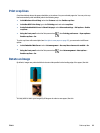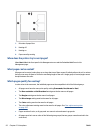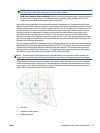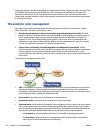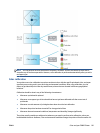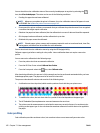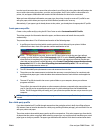
NOTE: Colors in subtractive devices can also be controlled by using RGB data. Especially when control
over the printer’s black ink is unnecessary, this is an efficient option.
●
CMYK (Cyan, Magenta, Yellow, and Black) is the color space for subtractive devices, such as printers or
presses. A color is represented as a combination of cyan, magenta, yellow, and black (K) inks, and
combinations provide the entire range of colors in the device.
Color spaces are only methods of controlling different color-imaging devices. They do not describe colors
directly. The same CMYK values, for example, create different colors when sent to different printers that use
different inks and paper types. For example, consider a printer that can use indoor inks or outdoor inks. The
printer (hardware) is the same, but it has two different color gamuts due to the different chemistry of the
inks (dye-based versus pigmented). Furthermore, they need to work with different paper types, as ink
interaction with the paper depends on its chemistry. Thus, the colors resulting from given CMYK values
depend on the types of inks and papers that you use with a printer. If this is the case using the same printer,
you can easily imagine how different results can be obtained with printers using different technologies and
therefore using different ink chemistry.
The same happens with RGB-controlled devices. For example, imagine that two different monitors from the
same manufacturer have their white points at 9600 K and 6500 K, respectively. Their colors are going to be
different because they will be related to a different white point reference. The situation varies even more
among monitors from different manufacturers. To emulate the standard color temperature of the graphic-
arts industry, set the white point of your monitor to 5000 K (also called D50).
NOTE: The white point is the brightest neutral color that a device can reproduce or that is present in an
image. The human visual system automatically adapts to the content of an image based on its white point.
Different devices do not give access to the same color gamuts: some colors that can be shown on a display
cannot be matched in print, and vice versa. The following figure illustrates how the human eye perceives a
larger range of colors than a typical display or printer. It also shows that the color gamuts in two different
types of color-imaging devices do not match each other.
1. All colors
2. Computer monitor gamut
3. CMYK press gamut
ENWW The problem: color in the computer world 97



